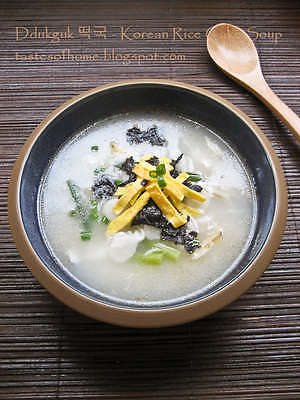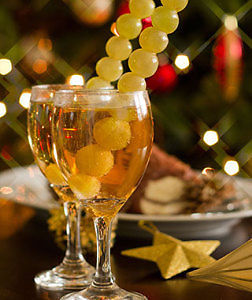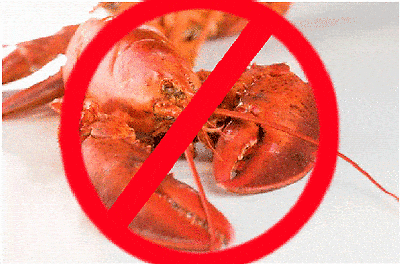This post may contain affiliate links. The Review Wire may collect a share of sales if you decide to shop from them. Please see my full disclosure policy for details.
Celebrating the New year is always a big party for everyone involved. It’s a time for new beginnings, new resolutions & a time to look forward to the year ahead. Everyone hopes that the New Year will bring good luck, good health & of course-financial prosperity. Food plays a big part in every culture and especially on New Years Day. Every culture has a different way that they like to celebrate the incoming new year!
As I am one-half Korean, I remember our traditions that my family celebrated each year. I still try to continue those Korean traditions with my family, even though my extended family lives far away. The first thing we do is call each of our loved ones at the stroke of midnight. It doesn’t matter that it’s midnight, you have to make the call! I think that calling at midnight is a multicultural practice though. We all want to talk to our loved ones for the New Year.

Image Provided By Smokywok
Korean Culture
In the Korean culture, New Year’s lasts 3 days. The day before, the day of and the day after. It is one of the most significant traditional Korean holidays. We eat soups and feast on a lot of food over the course of those 3 days. Food has so much significance in the Korean lifestyle because Korea has experienced a lot of “lean” times as a country. Food is considered their currency. The 3 main dishes for a lucky New Year are “TTeokguk”, which is soup (similar to egg drop soup) with sliced rice cakes.
Then there is Jeon (also called Bucnimgae) which is a Korean pancake, and last but not least is Miyuk Guk which is seaweed soup. This soup is served not only on New Years but for each family member’s birthday. It is thought to have healing properties as seaweed helps to cleanse the blood of impurities. One caution though, do not eat this soup before a big exam, as is thought to bring bad luck because Koreans believe that the slippery nature of the seaweed will make the knowledge slip right out of your head!

Image Provided by Food N’ Culture
Other Cultures
As we look at other cultures, there are a lot of foods that are New Year’s staples. In Spain, they consume 12 grapes at midnight. The goal here is to swallow all of the 12 grapes before the last stroke of midnight. Peruvians however, insist on taking in a 13th grape for good measure. Legumes (beans, peas, & lentils) are symbolic of money. Their appearance resembles coins that swell when cooked so they are consumed with financial rewards in mind.
In Italy, it is customary to eat “cotechino con lenticchie” (sausages & green lentils) just after midnight. Germans also partner legumes & pork (pork is considered lucky!), usually lentil or split pea soup with sausage. Brazilian’s first meal of the New Year also consists of lentil soup or lentils and rice while in Japan the “osechi-ryori” a group of symbolic dishes eaten during the first 3 days of the new year includes sweet black beans called “kuro-mame”.

Danish New Year’s cod with beetroot, potatoes and mustard sauce. Photograph- Romas Foord for Observer Food Monthly Romas Foord/Observer Food Monthly
Roasted suckling pig is served in Cuba, Spain, Portugal, Hungary & Austria. It is also consumed in Italy & the USA where thanks to its rich fat content signify wealth & prosperity. Fish is yet another popular fast food for the New Year’s table. Long before refrigeration, cod could be preserved and transported, allowing it to reach the Mediterranean and even as far as North Africa and the Caribbean. The Catholic Church’s policy against red meat consumption on religious holidays helped to make cod, as well as other fish, commonplace for feasts.
The Danish eat boiled cod while in other parts of Europe, they enjoy dried salt cod. Herring is consumed at midnight in Poland & Germany. Germans also enjoy carp and have been known to place a few fish scales in their wallets to bring good luck. The Swedish have a smorgasbord with a variety of fish dishes such as seafood salad and in Japan, herring roe is consumed for fertility, shrimp for long life & dried sardines for a good harvest.
Cakes are also very commonly served from Christmas to New Year’s around the world, with an emphasis placed on a ring or round shaped items. In certain cultures, it’s customary to hide a special trinket or coin inside the cake, the recipient will be lucky in the new year. Not all cakes are round, though. In Scotland, there is a tradition called “first footing” where the first person to enter a home after the new year determines what kind of year the residents will have. They will generally bring a baked good of some sort.
Not So Lucky

So, with all of these “lucky food items” mentioned above, there are a few to avoid as well. Lobster is unlucky because it moves backward and could lead to setbacks. Chicken is also discouraged (I know, this one surprised me too!). The theory warns against eating any winged fowl because good luck could fly away.
Whatever culture you choose to follow, just remember, New Year’s brings a fresh start and regardless of what you eat that day, it’s your state of mind that will make or break your new year!
Written by Jackie Palmer


Korean traditions are so cool. Its always fun to know about various cultures and their traditions.
I have my resolution for the New Year set for travel and this post shows the different cultures and how they have different traditions. I’m inspired by this post and would love to travel to the different places on this post.
Wow! This is so interesting! From swallowing 12 grapes to eating “lucky foods”, it is so interesting how other cultures perceive New Years.
I love to know about different people cultures and how they celebrate their festivals. Its fun with delicious food and lights. Thanks for sharing all fun facts.
Thanks for all the fun facts. I love any Holiday that consist of eating for 3 days!
These are some interesting ways to celebrate the New Year. Some of them I was familiar with but did not know about that lobster and chicken were not so lucky!